instruments
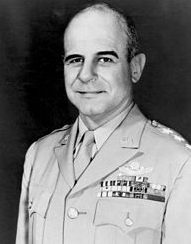 Most of us think very little about piloting a plane. We leave that to the professionals, but how did they get to be professionals? How did they learn all the techniques that they now use every day? Of course, that is a story that is far to long to write here, but suffice it to say that there was a lot of trial and error, a lot of visionaries, and a lot of test pilots who were willing to lay it on the line for progress. Test pilots suffered everything from failure to death in their quest for victory. Eventually they would go on to pave the way for so much innovation, that today, air travel is a commonplace thing, available to almost everyone.
Most of us think very little about piloting a plane. We leave that to the professionals, but how did they get to be professionals? How did they learn all the techniques that they now use every day? Of course, that is a story that is far to long to write here, but suffice it to say that there was a lot of trial and error, a lot of visionaries, and a lot of test pilots who were willing to lay it on the line for progress. Test pilots suffered everything from failure to death in their quest for victory. Eventually they would go on to pave the way for so much innovation, that today, air travel is a commonplace thing, available to almost everyone.
One such innovator, was Jimmy Doolittle. Prior to 1929, planes either had to be rerouted, or not fly in bad weather or limited visibility, but Doolittle was sure that there was a way to fly blind…and land safely. Now he just had to prove it. Until 1929, the only way to fly or land was by sight…known as VFR (Visual Flight Rules). These days pilots know that even if they can’t see, they can still fly safely using the instruments…known as IFR (Instrument Flight Rules).
I’m sure that someone had the idea in their head, that such a thing was possible, with no way to figure it out, but Doolittle was about to make his most important contribution to aeronautical technology…the development of instrument flying. Doolittle realized that true operational freedom in the air could not be achieved unless pilots developed the ability to control and navigate aircraft in flight, from takeoff to landing, regardless of the range of vision from the cockpit. It was an amazing unheard of idea. Doolittle believed that a pilot could be trained to use instruments to fly through fog, clouds, precipitation of all forms, darkness, or any other type of poor visibility. He also believed that the plane could be landed safely even if the pilot’s motion sense was impared. At that time, the ability to control aircraft was partly about getting beyond the motion sense capability of the pilot. You see, sometimes pilots could become seriously disoriented without the visual cues from outside the cockpit. 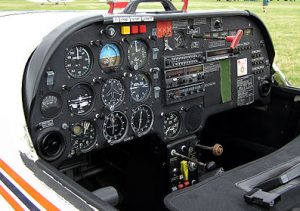
On this day, September 25, 1929, Doolittle would prove his theory, that if a pilot would “trust his instruments” and not his senses, he could safely take off, fly, and land, even if he could not see. Flying blind became a reality when Doolittle took off from and returned to Mitchel Field that September day. He had assisted in the development of fog flying equipment, helped develop, and was then the first to test, the now universally used artificial horizon and directional gyroscope. Of course, the flight made big news and Doolittle was given the Harmon Trophy for conducting the experiment.
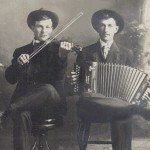 On the back of the violin is a name, Allen Spencer. I assumed that it was carved lovingly into the wood by my great great grandfather when he was young. I have no way of knowing just exactly when it was written, but it would seem like something a child would do. Grandpa was born in 1826, and died in 1883, and as near as I have been able to find, the violin might have been made in 1866, which would mean that my great great grandfather was 40 years old. No matter how old he was when he engraved his name into the violin, the length of time the violin has been in our family tells me that music to some degree has been in my family for several generations. That violin was handed down from my great great grandfather, to my great grandfather, William Malrose Spencer, to my grandfather, Allen Luther Spencer, to my Uncle William Malrose Spencer II, who passed it on to my dad, Allen Lewis Spencer, with the request that we keep it in our family. We have had several violinists in our family, my sister Allyn, and my daughter Corrie, to name two. The violin is in great condition, and has been well used throughout the years.
On the back of the violin is a name, Allen Spencer. I assumed that it was carved lovingly into the wood by my great great grandfather when he was young. I have no way of knowing just exactly when it was written, but it would seem like something a child would do. Grandpa was born in 1826, and died in 1883, and as near as I have been able to find, the violin might have been made in 1866, which would mean that my great great grandfather was 40 years old. No matter how old he was when he engraved his name into the violin, the length of time the violin has been in our family tells me that music to some degree has been in my family for several generations. That violin was handed down from my great great grandfather, to my great grandfather, William Malrose Spencer, to my grandfather, Allen Luther Spencer, to my Uncle William Malrose Spencer II, who passed it on to my dad, Allen Lewis Spencer, with the request that we keep it in our family. We have had several violinists in our family, my sister Allyn, and my daughter Corrie, to name two. The violin is in great condition, and has been well used throughout the years.
My grandfather, Allen, enjoyed jamming with his brother-in-law, Albert, who was playing the accordion. I can imagine that their jam session was a lively time, as those two instruments don’t usually go together. Nevertheless, when a couple of brothers get together and try to outdo each other in their play, and from what I have seen of these two brothers, they liked to joke around. They always seem to have a twinkle in their eyes in the pictures I’ve seen. I have a feeling that the brothers could be…maybe a little mischievious.
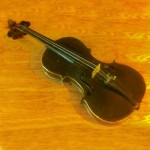
When we received the violin, it occurred to me that this was a pearl of great price, so to speak. Maybe the name engraved on the back reduces the value in the eyes of an antique dealer, but it only increases the value to us. So often you have very little that belonged to your great great grandfather…especially when he died 73 years before you were born. That is the real thing that gives it value to me and my family. This was something that my great great grandfather, great grandfather, grandfather, my uncle, and my dad all took pleasure in, and something my mom, my sisters, and our families will all take pleasure in for years to come…because it was my great great grandfather’s violin.
 Kids just naturally have a love of musical instruments. Almost from the time they are born, they play with rattle and other noise makers for entertainment…sometimes to the point of headaches for their parents. It is a love of beautiful music…and believe me, we all have very different ideas of exactly what beautiful music is…that leads us to try to create the music we love on our own.
Kids just naturally have a love of musical instruments. Almost from the time they are born, they play with rattle and other noise makers for entertainment…sometimes to the point of headaches for their parents. It is a love of beautiful music…and believe me, we all have very different ideas of exactly what beautiful music is…that leads us to try to create the music we love on our own.
At Christopher’s age, it’s all about the noise level, the louder it pops, clangs, rings, or squeaks, the better they like it. Wait…I think that part of a kids love for music last at least until their 30’s and sometimes even longer, so really Christopher is just doing what every teenager does, only with different instruments. And he was having the time of his life doing it. You can’t help but smile, even though you know that after a few minutes of cuteness, the noise probably drove his parents nuts.
As kids get bigger, their choices of instruments change, and the opportunities they have in school help with those changes. I’m sure you all remember the recorder that kids learned to play on about 4th grade. Most kids sound pretty much like I do when I play the recorder…a sick duck, but my daughter Amy had a way with the recorder. She could make it really sing. That’s why we chose the Clarinet for her when she got to fifth grade, even though her sister, Corrie had chosen the Violin. Both girls played very well all the years they played in school, and I thoroughly enjoyed going to their performances.
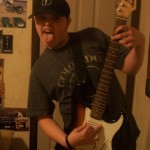 Christopher played the Trumpet in 5th and 6th grade, and his brother, Josh played the Clarinet in 5th grade, following in his Aunt Amy’s footsteps. My granddaughter, Shai chose not to play an instrument, but go into choir for a time. Caalab would be the one to continue in the musical world, when he decided to take up the Guitar and follow in his dad’s footsteps. He now owns several Guitars, and continues to get better and better. He takes Guitar in school, and nobody has to tell him to practice. He loves to play. Where once he had rocks in his pockets, he now has multiple picks. He may not always have his Guitar, but those picks seem to always be with him. Typical, I guess for the boys in the band.
Christopher played the Trumpet in 5th and 6th grade, and his brother, Josh played the Clarinet in 5th grade, following in his Aunt Amy’s footsteps. My granddaughter, Shai chose not to play an instrument, but go into choir for a time. Caalab would be the one to continue in the musical world, when he decided to take up the Guitar and follow in his dad’s footsteps. He now owns several Guitars, and continues to get better and better. He takes Guitar in school, and nobody has to tell him to practice. He loves to play. Where once he had rocks in his pockets, he now has multiple picks. He may not always have his Guitar, but those picks seem to always be with him. Typical, I guess for the boys in the band.

